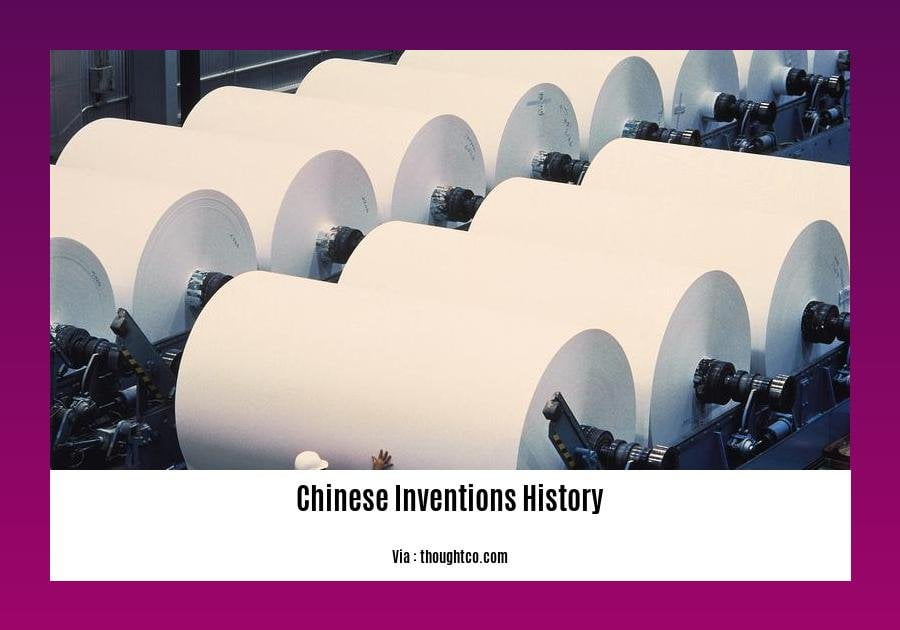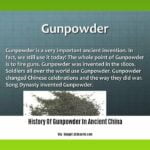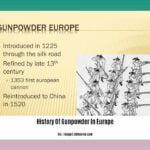Embark on an enthralling journey through [A Journey Through Chinese Inventions History], where we delve into the remarkable tapestry of innovations that propelled the Chinese civilization to the forefront of human progress. From the enigmatic origins of papermaking to the ingenious advancements in gunpowder technology, we uncover the fascinating stories behind these groundbreaking creations that shaped the course of human history.
Key Takeaways:
- Silk, invented around 2696 BC, was a key textile innovation.
- Alcohol was discovered between 8000 and 7000 BC, shaping beverage history.
- The umbrella, invented between the 16th and 11th centuries BC, provided protection from the elements.
- Cast iron smelting emerged in the 5th century BC, advancing metallurgy.
- An earthquake detector, invented in 132 CE, showcased early seismological understanding.
- The toothbrush, introduced in the 9th century CE, revolutionized oral hygiene.
- Paper money, invented in the 9th century CE, transformed financial transactions.
- The manual seed drill, invented in the 2nd century BC, enhanced agricultural productivity.
- The compass, gunpowder, paper, and printing technology are renowned as China’s “Four Great Inventions.”
Chinese Inventions History
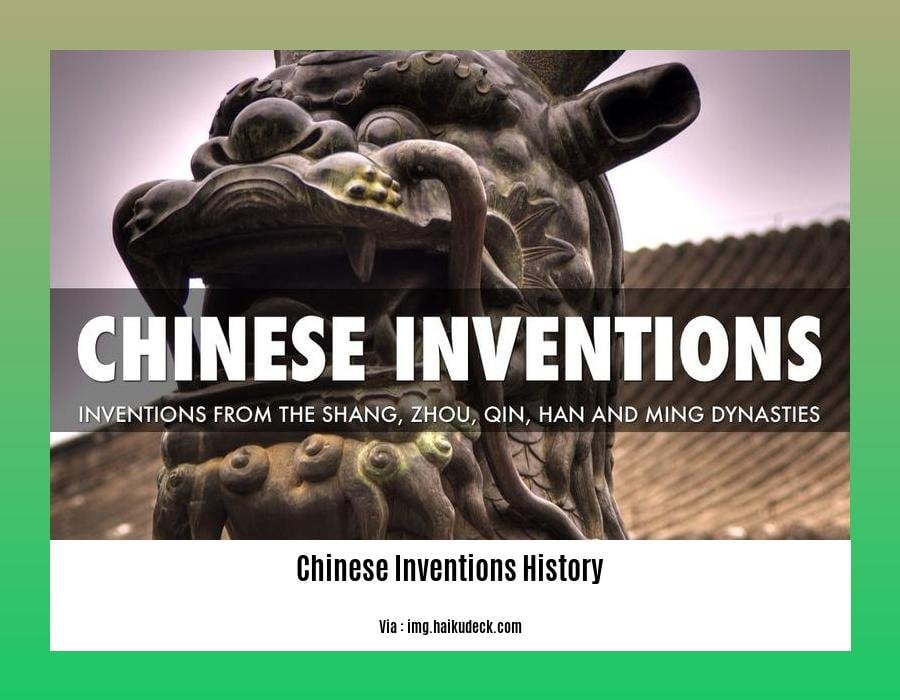
China’s legacy of innovation shines through its Chinese inventions history. These breakthroughs have transformed global civilization:
Papermaking (2nd Century BCE): Paper revolutionized communication, making knowledge accessible worldwide.
Compass (2nd Century CE): Seafaring flourished with the compass, enabling navigation and exploration.
Gunpowder (9th Century CE): A pivotal invention in warfare, gunpowder forever altered military strategies.
Movable Type (11th Century CE): Mass production of books became possible, accelerating the spread of knowledge.
Clock (11th Century CE): Precise timekeeping transformed daily life and organization.
Abacus (13th Century CE): This counting tool simplified mathematical calculations in commerce and science.
Printing Press (15th Century CE): Earlier than Gutenberg’s, the Chinese printing press played a vital role in literacy and knowledge dissemination.
Vaccination (16th Century CE): Early forms of vaccination provided protection against deadly diseases, revolutionizing healthcare.
Parachute (16th Century CE): The parachute enabled safe descent from heights.
Rocket (17th Century CE): Rockets, initially used for entertainment, later found military and space exploration applications.
China’s inventions mirror human ingenuity. From navigation to communication, these breakthroughs have shaped our world, paving the way for countless future advancements.
The history of ancient China is a fascinating and complex subject, spanning thousands of years and multiple dynasties. From the Xia dynasty to the Qing dynasty, China’s history is a rich tapestry of cultural, political, and economic development.
The Chinese civilization history is one of the oldest and most continuous in the world. Its origins can be traced back to the Neolithic period, and it has flourished for over 5,000 years. Chinese civilization has made significant contributions to the world in areas such as science, technology, literature, and art.
The ancient china dynasties are a major part of Chinese history. Each dynasty brought its own unique contributions to Chinese culture and society. Some of the most famous dynasties include the Han dynasty, the Tang dynasty, and the Ming dynasty.
Gunpowder (9th Century CE)
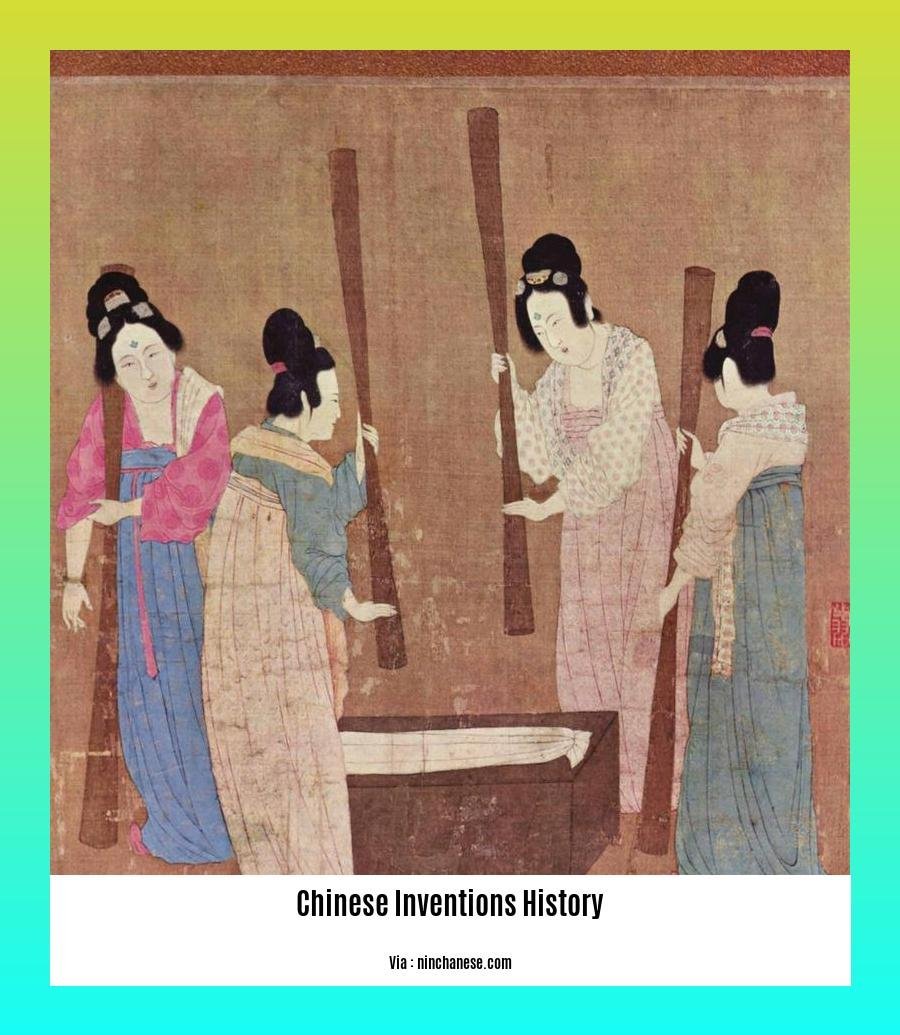
Alchemists in ancient China stumbled upon a world-changing substance, gunpowder, while they were diligently seeking the elusive elixir of life. The 9th century witnessed the birth of this explosive marvel, an accidental byproduct of their alchemical endeavors. By the 11th century, Chinese scientists had meticulously documented gunpowder’s chemical formula, paving the way for advancements that would reshape the course of history.
Key Takeaways:
- Gunpowder, the first explosive, emerged in China during the 9th century.
- Initially, it was a byproduct of alchemists’ quest for immortality.
- Gunpowder revolutionized warfare, providing a technological edge in military strategies.
Most Relevant URL Source:
Movable Type (11th Century CE)
The 11th century witnessed a pivotal invention in China that revolutionized communication and accelerated the spread of knowledge: Movable Type. This remarkable innovation laid the foundation for Europe’s Gutenberg printing press, transforming the dissemination of ideas forever.
Invented by Bi Sheng during the Song Dynasty, movable type introduced the concept of using individual ceramic pieces for each character, replacing the laborious method of carving an entire page into a printing block. This ingenious approach made printing faster, more efficient, and ultimately more accessible.
While whole-block printing remained more cost-effective in China, movable type’s impact on Europe was profound. It enabled mass book production, fueling the rapid spread of the Renaissance and contributing to the Reformation and scientific advancements.
Key Takeaways:
- Movable type used separate pieces for each character, unlike whole-block printing.
- It accelerated printing speed and efficiency, revolutionizing communication.
- Europe’s Gutenberg printing press was based on the earlier Chinese movable type invention.
- Movable type played a crucial role in the dissemination of knowledge during the Renaissance and Reformation.
- Despite its impact on Europe, whole-block printing remained more common in China.
Citation:
Printing Press (15th Century CE)
The Chinese printing press, invented before Gutenberg’s invention in the 15th century, transformed the world of knowledge dissemination and literacy.
Monks in China used block printing to create impressions on paper for centuries, but the invention of movable type in the 12th century revolutionized the process. Bi Sheng’s movable type method used individual letters instead of carved woodblocks, making printing more efficient and accessible.
Wang Chen printed a treatise on agriculture using woodtype in 1297, showcasing the practical applications of the movable type printing press.
Key Takeaways:
- Chinese inventors created the printing press over 600 years before Gutenberg.
- Movable type printing enabled mass book production and the spread of knowledge.
- The Chinese printing press played a significant role in the spread of literacy and facilitated intellectual growth.
Relevant URL Source:
FAQ
Q1: What are some of the most significant inventions from ancient China?
A1: Some of the most notable inventions from ancient China include cast iron smelting, the toothbrush, the manual seed drill, and inventions known as the “Four Great Inventions”: the compass, gunpowder, paper, and printing technology.
Q2: When was gunpowder invented?
A2: Gunpowder was accidentally discovered during the late Tang dynasty in the 9th century. The earliest recorded chemical formula for gunpowder dates back to the Song dynasty in the 11th century.
Q3: What are the key differences between moveable type and whole-block printing?
A3: Movable type, invented by Bi Sheng in the Song Dynasty, used separate pieces for each character, while whole-block printing carved the entire page into a printing block. Movable type allowed for faster and more efficient printing than whole-block printing.
Q4: How did the printing press revolutionize communication in Europe?
A4: Movable type printing, introduced in Europe by Johannes Gutenberg in 1440, revolutionized communication by allowing for the rapid and efficient dissemination of knowledge and ideas. It played a significant role in the Renaissance, the Reformation, and the rise of science.
Q5: Why did China not fully adopt movable type printing?
A5: While movable type was invented in China, it was not widely adopted due to the lower cost of whole-block printing in China.
